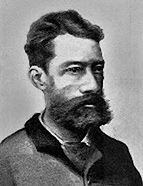

With regard to the fundamental issue, i.e. the ethnological problem, his originality lies in contradicting an idea that dominated the scientific landscape at the time, supported by many of the great contemporary scholars on the subject, according to which the Lusitanian (or Lusitanian-Galician) people had a Celtic origin (see Millán González-Pardo, “El anticeltismo ...” 1983 and Guerra, “F. Martins Sarmento...”, 1999). Through his persistence and directness in opposing this theory, Martins Sarmento affirms the uniqueness of his thinking and, to the same extent, emphasises his isolation, a circumstance of which he is proud and which his personality has always claimed. In his belief, the movements of Celtic populations, so present in the historiography of the time and affecting other regions of Europe to a large extent, never reached the Lusitanian world. One of the strands of his argument is based on the principle that, if such movements had existed, Greek and Latin literary sources would have recorded them. He therefore accepts their presence in the south-west of the Iberian Peninsula, where sources place Celtic populations, and in the Celtiberian area, as the ethnic name itself indicates, but rejects their presence in the north-west. To do so, he has to skilfully sidestep the issue by considering that the Neri, also known as Celts, inhabitants of the extreme north-west, would not contribute to modifying his theory because, being a small group, they would have been ‘absorbed’ by the Lusitanians. Thus, when questioning the origin of these populations, he finds the answer in Avienus ’ poem Ora maritima, which he analysed in detail with regard to the western peninsula. Accepting the interpretation of K. Müllenhoff , a renowned editor of the Latin text, Sarmento maintained that this work, attributed to the 4th century AD, which still arouses considerable controversy today, compiled remote geographical information gathered during a Phoenician voyage, which would allow us to characterise an early picture of the ethnology of Hispania. The passage valued by the archaeologist from Citânia specifically stated that the Cempsos and Sefes inhabited the territory of Ofiussa and that next to them, in the northern part, were the Lígures and Dráganos , which, for him, could only correspond to the north-west of the peninsula, an interpretation that Adolfo Coelho disputes.
This work is financed by national funds through FCT - Foundation for Science and Technology, I.P, in the scope of the projects UIDB/04311/2020 and UIDP/04311/2020.
